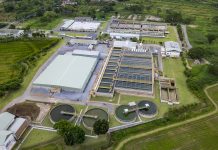There have been 2 noteworthy decisions on the fossil fuel front this month – one by the world’s largest public bank and the other by the world’s largest oil producer. The first is the decision by The European Investment Bank (EIB), the lending arm of European Union, to phase out its multibillion-euro financing of fossil fuel projects. The second is the IPO, purportedly the world’s biggest, of Saudi Aramco. These two decisions work at cross-purposes in determining the future of fossil fuels. With “Climate Emergency” looming large in our crosshair, economists and environmentalists seem to be at loggerheads.
EIB Funding
Under its new policy, the EIB will align all its lending decisions with the Paris Climate Accord and energy projects seeking EIB’s funding need to demonstrate CO2 emission levels of below 250 grams per KWH of energy produced. Climate campaigners are claiming that the EIB’s decision is a significant victory for the climate movement and an important step towards fulfilling EU’s objective of becoming carbon-neutral by 2050. The world’s largest public lender has clearly yielded to the growing public pressure and may have driven yet another nail in the coffin of the fossil fuel industry. But has it?
Aramco IPO
On the other hand, the funeral of the fossil fuel industry must be far removed in the minds of the sponsors of Saudi Aramco, as they embark on the ambitious project of floating the largest public stock in our history. Obviously, they see a glowing future for oil and are inviting us to participate in their dream. In its 658-page IPO prospectus, Saudi Aramco, currently the most profitable company in the world, is seeking to become also the world’s most valuable company by displacing Apple. Will oil replace data, is the trillion-dollar question before hopeful investors seeking to buy into Saudi Aramco’s dream?
Peak Oil
In 1956, M King Hubbert, a geologist employed with Royal Dutch Shell, formulated the concept of Peak Oil, according to which the oil production in the US would peak in the 1970s before eventually running out. Hubbert’s prognosis appeared to be coming true, as after peaking at 9.6 MMBPD in 1970, US oil production was mostly on a southward slope for the next 3 decades. Last year, the daily production of oil in US exceeded the daily production in 1970. Thanks to advances in prospecting, exploration and drilling technologies. According to International Energy Agency (IEA), conventional crude oil production peaked in 2006. The current Peak Oil forecast ranges from early 2020s to 2040s and will largely be governed by economics and how governments respond to the climate crisis. Aramco used to dismiss Peak Oil as “not based on logic and facts, and formed mostly in response to pressure and hype”. But in its IPO prospectus it concedes to a levelling off of demand by 2035.
A Stern Warning
Earlier this month 11,000 scientists feeling a moral obligation to warn humanity of any catastrophic threat and to “tell it like it is” declared that planet Earth is facing a climate emergency. This group that calls themselves as “Alliance of World Scientists” has recommended that we should leave the remaining stocks of fossil fuels under the ground, and rapidly implement massive energy efficiency and conservation practices. They are demanding an immediate replacement of fossil fuels with low-carbon renewables and other cleaner forms of energy. Aramco also foresees a reduction in demand for crude as a result of increasing availability of alternative energy sources, greater energy efficiency, and the emergence of new technologies like electric vehicles. Notwithstanding this, the company forecasts 0.8% annual growth rate upto 2030 with the main demand emanating mainly from the developing countries in the Asia-Pacific region.
A New Peak
In the last century, “Peak Oil” reflected concern for a dwindling natural resource. Today, after having established alternative resources, it signifies hope and a new green beginning. Many environmentalists would be more than happy if the world were to run out of fossil fuels tomorrow. It would only hasten the adoption of alternative sources of energy. The growing concerns on climate change has shifted the “Peak Oil” narrative from supply to demand. When will the demand for oil peak?
The Indicators
Vitol, the Netherlands based company that trades in 7 MMBPD of crude oil and petroleum products, believes that, even with the increased adoption of EVs, the demand for oil will continue to grow for the next 15 years but will begin to fall thereafter. The company is however taking cognisance of the energy transition and have announced their intention to invest in renewable energy assets across Europe like windmills and battery parks. Andy Hall, the legendary oil trader, believes that the demand could peak as early as 2030. IEA also predicts that demand for oil will plateau around 2030. Transportation accounts for nearly 60% of the demand for oil and this is the area where most changes, technological as well as sociological, are expected. Electric Vehicles powered by cheaper and robust batteries (Powering the Future, Chemingineering, October 2019) are poised to make rapid inroads. Environmental conscience will make more people switch from owning cars to sharing and hailing rides. And most importantly, this peaking has to happen at the earliest if we have a reasonable chance of meeting the Paris Accord target of limiting the global warming to below 2 degrees Celsius.
Contrarian View
So, there is a broad consensus on peaking of demand for fossil fuels in general and oil in particular in the next 2 decades. How quickly it happens depends a great deal on policy decisions, like the kind made by EIB earlier this month. But rogue politicians are also rolling back stringent energy-efficiency norms. Saudi Aramco’s controversial IPO apparently flies in the face of this consensus. One explanation could be that it wants to milk the last gallon of oil before it vanishes altogether. Probably the company sees the writing on the wall and wants to divest and use the proceeds to diversify the country’s economy. This sobering thought will perhaps help us understand its vision of growth “by balancing production between maturing areas and newer production sources, tapping into new reservoirs when required to optimise the depletion rate of its fields”.
Epilogue
Even as I am writing this, news is coming in that the company has scrapped its international roadshows and want to limit the IPO to within the kingdom. This scale-back is ominous. Saudi Aramco’s stock price will be finalised on December 5th, after which it will start trading on the Saudi bourses. The stock will then become a new bellwether of the fossil fuel industry.
Readers’ responses may be sent to: k.sahasranaman@gmail.com or chemindigest@gmail.com






























